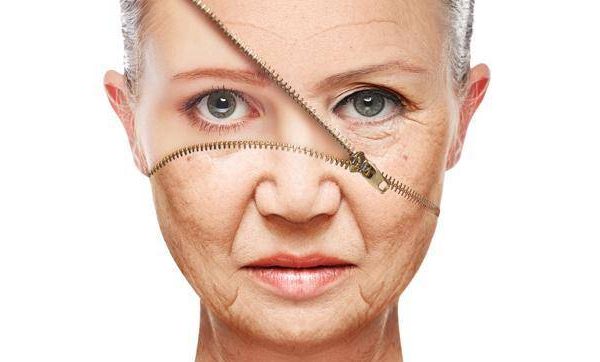I eat a wholefood diet, devoid of things like Doritos and ice cream. I do my best to avoid products with ingredients I can’t pronounce. So you can imagine my surprise when I discovered that biohackers were using a synthetic dye called methylene blue to boost their energy levels and brain power.
The Story of Methylene Blue
Methylthioninium chloride, aka methylene blue, was developed in the 1800s to dye fabric – you guessed it! – blue. Scientists soon discovered its value as a stain, giving them a better view of the internal structures of microorganisms. Later on, doctors used it to treat poisoning (both carbon monoxide and cyanide), malaria, and even a rare condition called methemoglobinemia, which interferes with the body’s ability to release oxygen to its tissues.
Today, scientists and doctors are using it for these issues and many more. In fact, its effectiveness against malaria led researchers to investigate the possibility of its use against SARS-Cov-2. [1]
How Methylene Blue Works
Methylene blue’s properties are as fascinating and varied as its history.
For starters, it’s a hormetic. Hormesis can be defined as “a process in which exposure to a low dose of a chemical agent or environmental factor that is damaging at higher doses induces an adaptive beneficial effect on the cell or organism”. [2] High doses are toxic, but low ones can save your life. You can see this clearly with methemoglobinemia; low doses are used to treat it, while high doses can trigger the condition. Low doses are also anti-inflammatory, while too much can cause inflammation.
Methylene blue is also a monoamine oxidase inhibitor (MAOI), which means that it inhibits the breakdown of neurotransmitters like dopamine and serotonin. This gives it huge potential for treating depression and other mood disorders. It also means it should never be combined with SSRIs or any other medications that boost serotonin. That can lead to Serotonin Syndrome, which can be fatal.
An Electron Magician
It’s also a magician with electrons, having the ability to both donate and accept them from other molecules. It uses this ability to keep the electron transport chain running smoothly, which increases the production of adenosine triphosphate (ATP) in the cells (specifically in the mitochondria). This is huge, because ATP is the main source of energy for our bodies and our brains.
It’s easy to see why methylene blue is on the WHO’s list of essential medications – and why doctors have been known to say, “When you don’t know what to do, give them methylene blue.”
So Many Health Benefits
The list of methylene blue’s potential health benefits seems endless. It has antiviral, antifungal, and antiparasitic properties. Research shows it can also be used to lower inflammation, reduce pain, improve memory and focus, slow down brain degeneration, and fight depression.
Researchers who induced inflammation in mice found that methylene blue reduced STAT3 activation in both the central nervous system and the skin. STAT3 is a key factor in inflammation. [3] Methylene blue has also reduced the pain and inflammation of osteoarthritis [4] and other pain conditions. Its anti-inflammatory properties most likely play a major role in its pain-reducing effects.
Research
According to an article in Science Direct, low-dose methylene blue improves memory retention and prevents neurodegeneration induced by metabolic insults. [5] But its potential in brain health is so much greater!
According to a 2021 research paper, mitochondrial dysfunction could be a missing link between aging and Alzheimer’s disease. Several studies suggest an association between mitochondrial dysfunction and abnormal processing of amyloid-beta and tau. Methylene blue has been shown to prevent aggregation of these proteins or even dissolve existing aggregates; it may help improve mitochondrial function in neurons affected by Alzheimer’s. While better research is needed, preliminary data presented in 2008 showed an 81% reduction in the rate of cognitive decline in Alzheimer’s patients over 50 weeks. [6] Preliminary or not, that’s impressive!
And that’s not all. In a three-week placebo-controlled clinical trial, Naylor et al. found that 15mg/day of methylene blue was “a potent antidepressant” and that further clinical evaluation was essential. [7]
Is Methylene Blue Safe?
Generally, yes, but not for everyone.
It’s considered quite safe for most people in low doses (less than 2mg/kg/day). High doses are dangerous, and there is no known antidote, so don’t mess around!
Remember, methylene blue should never be combined with SSRIs. It’s also important to know that it’s still used to treat methemoglobinemia. If you’ve been diagnosed with this rare disorder, your doctor may already have you taking methylene blue (possibly under another name). Taking too much, or adding it to something else, is dangerous. It’s always best to check with your medical professional, especially if you have a chronic condition or take medication.
It’s also important to buy the right kind of methylene blue. Some products are made to be used in labs. These are often cheaper, but they can be contaminated. Only the pharmaceutical-grade product is safe to consume. Here’s one you might want to try.
If you’re shopping around, you may notice that the powder is far less expensive than the liquid (which is usually a 1% solution). Be warned: The powder gets into everything, even when you’re careful. And it’s not easy to clean up, either. (If you’ve ignored my warning, try lemon juice.) Capsules are ideal but hard to find; most people are happy to spend the extra money on the 1% solution.
Want to try methylene blue?
If you’d like to try it out, start slowly. One drop of a 1% solution provides 0.5 mg, and a typical dose is 20 drops or 10 mg. It’s best to start with a few drops, adding a drop a day until you see a benefit. Many people take it only a few times a week, and most take a break every now and then.
Just be careful, though; the drops can stain both your tongue and your teeth. If you want to avoid that, consider putting them in a capsule. Size 4 should do the trick.
Whether you’re looking for more energy, a better mood, or a boost for your brain or immune system, these blue drops might surprise you. “When you don’t know what to do, give them methylene blue!”
References
Gendrot M, Andreani J, Duflot I, Boxberger M, Le Bideau M, Mosnier J, Jardot P, Fonta I, Rolland C, Bogreau H, Hutter S, La Scola B, Pradines B. Methylene blue inhibits replication of SARS-CoV-2 in vitro. Int J Antimicrob Agents. 2020 Dec;56(6):106202. doi: 10.1016/j.ijantimicag.2020.106202. Epub 2020 Oct 16. PMID: 33075512; PMCID: PMC7566888.
Mattson MP. Hormesis defined. Ageing Res Rev. 2008 Jan;7(1):1-7. doi: 10.1016/j.arr.2007.08.007. Epub 2007 Dec 5. PMID: 18162444; PMCID: PMC2248601.
-
https://www.frontiersin.org/articles/10.3389/fimmu.2023.1181932/full
-
https://www.ncbi.nlm.nih.gov/pmc/articles/PMC5863598/
Li X, Tang C, Wang J, Guo P, Wang C, Wang Y, Zhang Z, Wu H. Methylene blue relieves the development of osteoarthritis by upregulating lncRNA MEG3. Exp Ther Med. 2018 Apr;15(4):3856-3864. doi: 10.3892/etm.2018.5918. Epub 2018 Mar 2. PMID: 29581742; PMCID: PMC5863598.
-
https://www.sciencedirect.com/science/article/abs/pii/S0301008211001948
-
https://www.ncbi.nlm.nih.gov/pmc/articles/PMC8699482/
Xue H, Thaivalappil A, Cao K. The Potentials of Methylene Blue as an Anti-Aging Drug. Cells. 2021 Dec 1;10(12):3379. doi: 10.3390/cells10123379. PMID: 34943887; PMCID: PMC8699482.
Naylor GJ, Smith AH, Connelly P. A controlled trial of methylene blue in severe depressive illness. Biol Psychiatry. 1987 May;22(5):657-9. doi: 10.1016/0006-3223(87)90194-6. PMID: 3555627.
Main Photo credit: https://projectlyme.org/methylene-blue/



![women [longevity live]](https://longevitylive.com/wp-content/uploads/2020/01/photo-of-women-walking-down-the-street-1116984-100x100.jpg)










